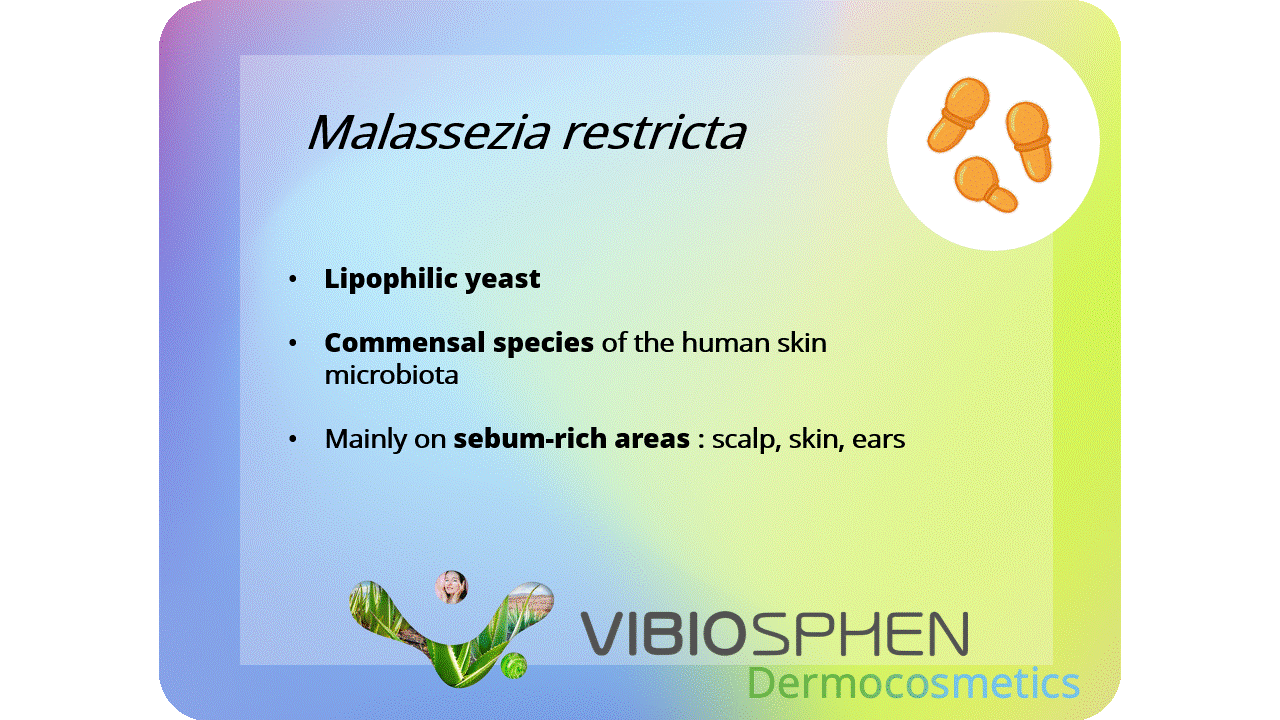Malassezia restricta involvment in dandruff pathology

A collaboration between 3 players : L’oréal – Qima – Vibiosphen
Our last collaboration led to a great publication to understand the aetiology of dandruff, and specifically the role of Malassezia restricta.
Dandruff and seborrheic dermatitis are on a continuous spectrum of the same disease that affects the seborrheic areas. While dandruff is limited to the scalp aera, seborrheic dermatitis is affecting other seborrheic areas of the body. They are considered the same basic condition, sharing many features and responding to similar treatments, differing only in locality and severity.
The objective of the collaborative work was to investigate the role of Malassezia restricta in the generation of dandruff.
In a nutshell, we demonstrated that Malassezia restricta was involved in the production of squalene monohydroperoxide (SQOOH) and malondialdehyde (MDA). These two compounds as well as Malassezia restricta are known to be in higher abundance in the dandruff scalp areas and seborrheic areas.
Therefore, the idea of the study was to use new tools to investigate the role on SQOOH, MDA and Malassezia restricta in the skin integrity thanks to an innovative model of reconstructed human explant (RHE).
All the details can be found in the article link below, but the presented in vitro data highlight that Malassezia restricta is a possible source of the elevated amounts of SQOOH and MDA on dandruff scalp. These elevated amounts are responsible for epidermis permeability and implicated in the downregulation on level of expression of 2 proteins involved in barrier function and known to be downregulated in dandruff cases, i.e. FLG and TGM3.
This work was reported in Acta Dermato-Venereologica. - Malassezia restricta-mediated Lipoperoxidation: A Novel Trigger in Dandruff
Please feel free to ask us more detail about how we conducted the study with a challenging growing strain and an innovative RHE model. This collaboration led to a great publication and to valuable perspective in the solution for dandruff and seborrheic dermatitis.
Catégories
Pagination
- Page 1
- Page suivante
Archives
- octobre 2025 (1)
- juillet 2025 (1)
- juin 2025 (3)
- mai 2025 (1)
- mars 2025 (1)
- mai 2024 (1)
- avril 2024 (2)
- septembre 2023 (1)
- août 2023 (1)
- mai 2023 (1)
- avril 2023 (2)
- février 2023 (1)
- décembre 2022 (1)
- octobre 2022 (1)
- juin 2022 (1)
- mai 2022 (3)
- avril 2022 (1)
- février 2022 (2)
- janvier 2022 (3)
- décembre 2021 (2)
- novembre 2021 (1)



